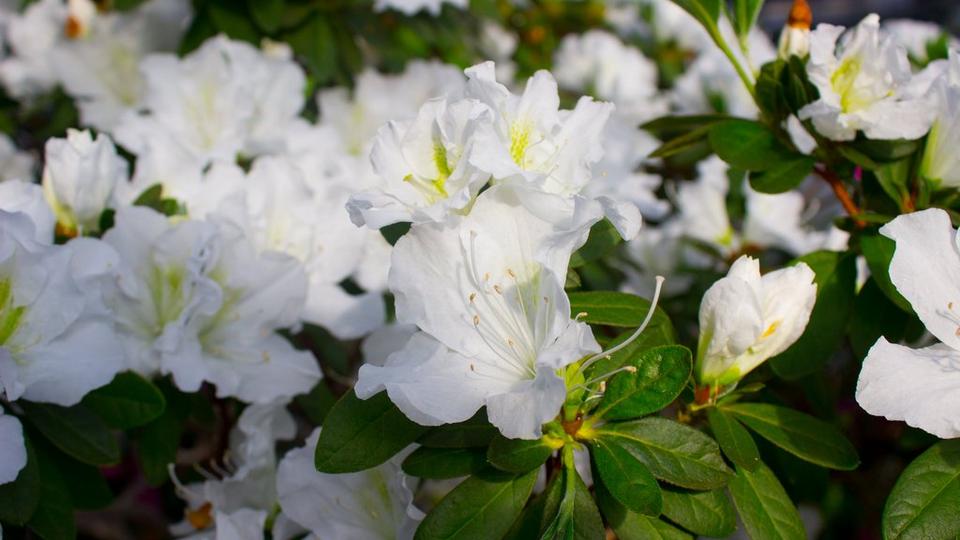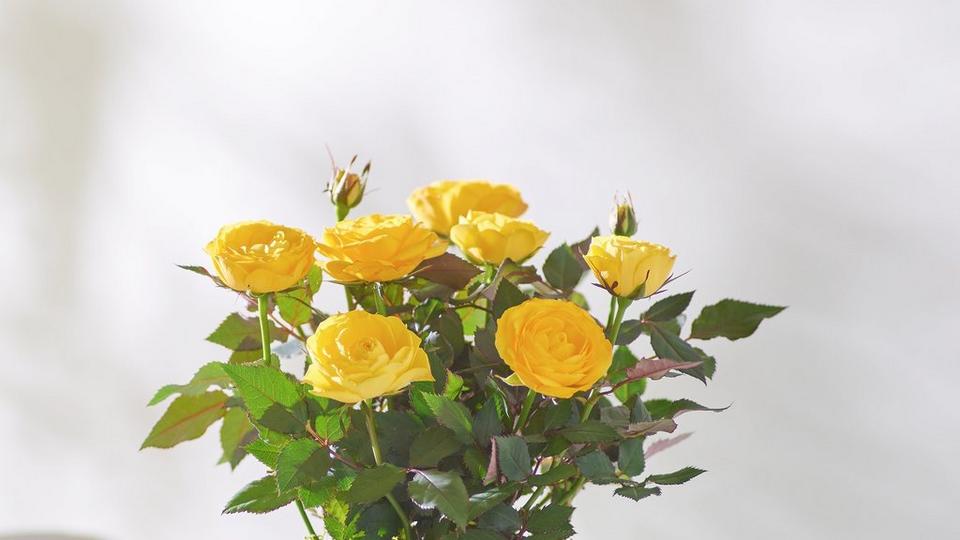Ultimate guide to hellebore plants
Read time - 8 mins

When Monet said, “I must have flowers, always and always”, I’m convinced he meant peonies and honestly? Same. When I’m not lusting after their perfect petals or saving a bouquet from a too sunny windowsill, you’ll find me at home raising the next generation of flower lovers (think sticky hands and zero vase etiquette).
When Monet said, “I must have flowers, always and always”, I’m convinced he meant peonies and honestly? Same. When I’m not lusting after their perfect petals or saving a bouquet from a too sunny windowsill, you’ll find me at home raising the next generation of flower lovers (think sticky hands and zero vase etiquette).
Hellebore flowers are an exquisite winter flower that combines radiant, nectar-holding petals with elegant sepals and pendulous blooms in shades of white, green, ruby, or pink. Thanks to their long flowering period, these perennials last deep into spring and they thrive in shadier settings. Not only are they wonderful to look at but Hellebores are also rich with symbolic meaning with numerous references in folklore and mythology.
Botanical Appearance
The sepals themselves come in a range of interesting and attractive colours and shades, including yellow, maroon, pink, plum, lavender, white and even blackish purple. Sepals can either be one colour or they can feature particoloured patterns featuring two or more colours.
Hellebore plants are quite compact and are typically 12-18in (30-45cm) in height, although there are a couple of bigger varieties such as H. foetidus and Helleborus argutifolius that can grow to an impressive 3ft (90cm). Hellebores are self-seeding perennials, that’s the technical way of saying each year they’ll be back with more lovely blooms.
Likes and Dislikes
Although there are different types of hellebore they nearly all prefer evenly moist and fertile soil, although they will grow just as well in most types of soil. Whereas they prefer a lightly shaded position, they can cope in sunnier places just so long as the soil is not allowed to dry out too much.
What hellebores don’t like is extremes. They are a fussy plant that dislikes very dry or very wet soil and they are not suitable to be in direct sunlight as this can cause scorching of the leaves, especially in the summer.
Little known fact
Hellebore symbolism and etymology
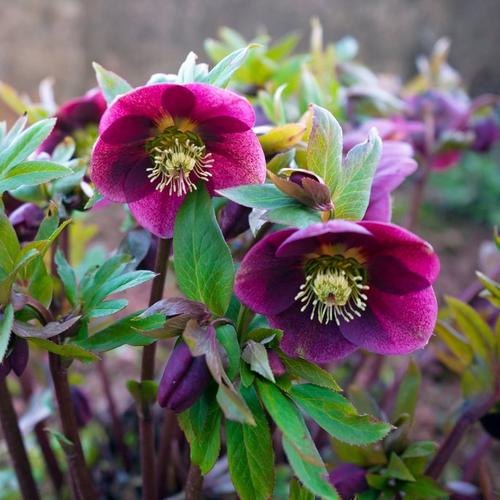
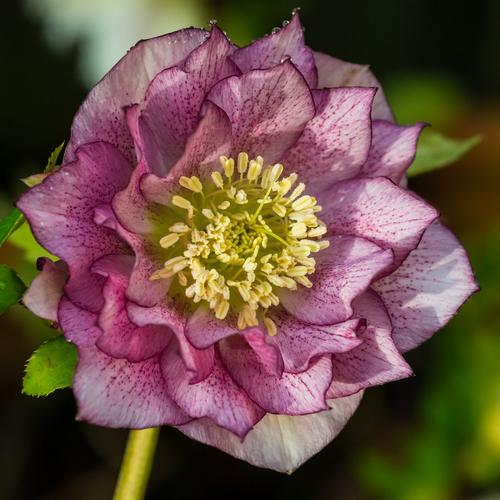
Along with the traditional symbolic meanings, the colour of the hellebore flower carries its own unique symbolism.
- White hellebores represent, sympathy, purity, and innocence
- Red flowers denote love and passion
- Pink flowers signify affection, femininity, and gentleness
- Green flowers embody good fortune, prosperity, health, and rebirth
- Grey flowers exemplify strength and sophistication
- Blue flowers characterise hope, desire, and love
- Dark purply black represents mourning, power, and mystery
- Yellow equals joy and friendship
- Orange-coloured flowers denote passion, excitement, and enthusiasm
- Purple hellebores relate to royalty and successful endeavours
So, as you can see, there are many different meanings for each hellebore flower colour, which is why it is one of the most popular flowers, especially for cut flowers and bouquets that make an excellent gift, especially at Christmas time.
The most popular varieties of hellebore plant
With over 20 different species of hellebore plant and many more subspecies it can be a bit daunting to know where to start if you have never purchased one before, so below are the details of four of the most popular types of hellebore flowers.
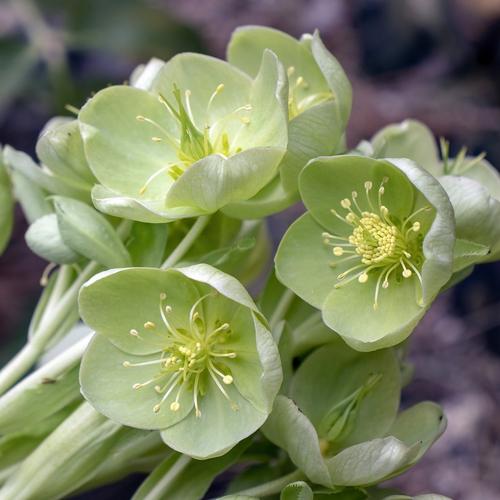

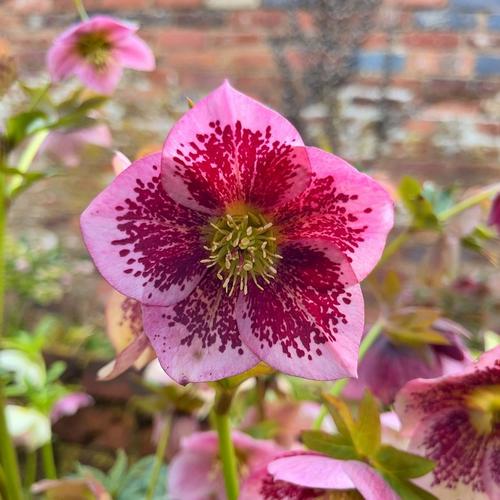
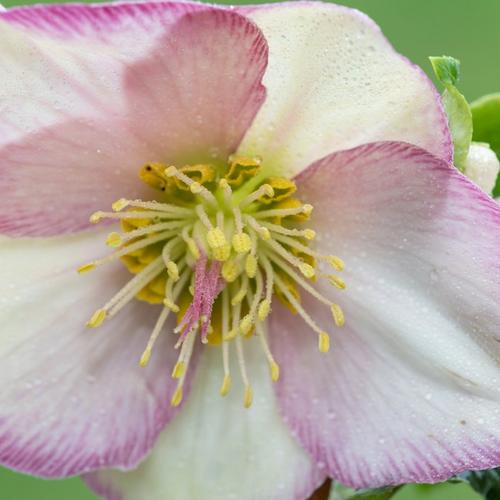
Watering a Hellebore
How to Water Hellebore
- Check the moisture level of the soil – Poke your thumb into the soil about an inch deep, if it feels dry then it is time to give your hellebore a drink.
- Add the water – Gently moisten the soil around the base of the plant with water from a small watering can until the soil is nicely moistened.
- Repeat – But not too often. Regularly check the moisture content of the soil by going back to step one on a regular basis.
Remember:
- Avoid over-watering as this can cause significant damage to the roots. - Water only if the soil is dry about 1 inch below the surface. - Avoid wetting the leaves.
- Water only if the soil is dry about 1 inch below the surface.
- Avoid wetting the leaves.
Hellebores care
Hellebore FAQs
Yes. Hellebores can be great as cut flowers so long as they are not positioned in direct sunlight and very warm spots. You can extend the life of cut hellebore flowers by simply making a small incision in the side of the stems. Plus, the blooms can be placed in a bowl of water, so they are floating on the surface like water lilies, which make a beautiful centrepiece for your table.
Some varieties of hellebore such as the Christmas Rose or White Christmas varieties have been bred especially for display in a living room during the winter months. To ensure longevity, place them in a cool spot away from direct sunlight and water them regularly but avoid overwatering. In the run-up to Christmas, florists often stock several varieties of hellebore, especially those that have large blooms and exemplary vase life.
Yes. Unfortunately, all parts of the hellebore plant are toxic in different ways, and for this reason, it is vital that you handle hellebores with caution, and to keep them out of range of inquisitive children and animals. The sap of the plant can induce an allergic contact reaction in sensitive individuals, so you should always wear gloves when handling the plant.
Most varieties of hellebores typically bloom between late November and April, and their blooms often stay around for a month or a bit longer.
No. They are perennial plants that will regrow year after year but the plant only blooms once a year.

